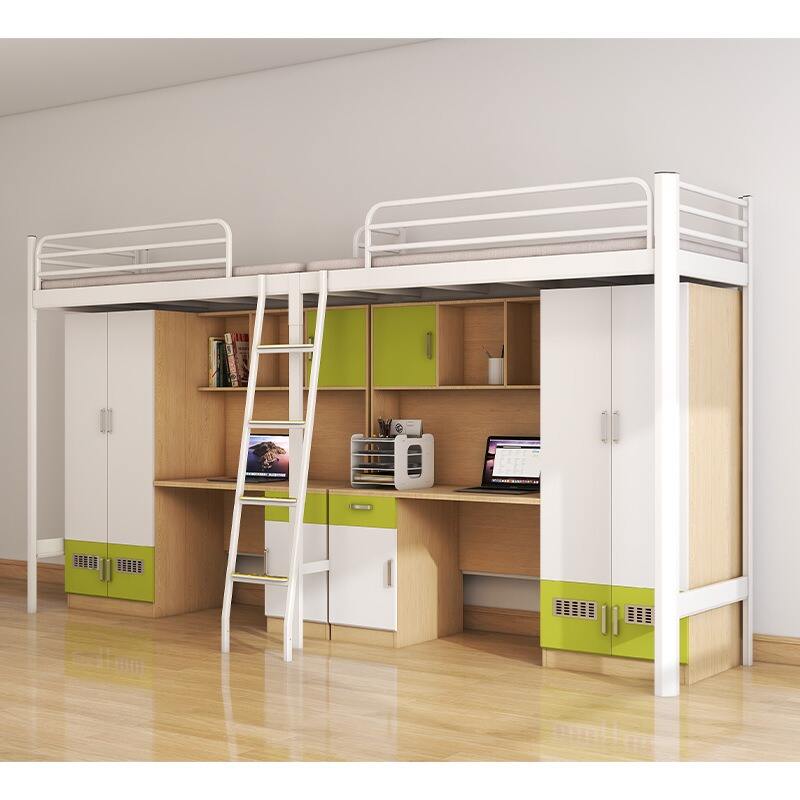The Vital Connection Between Student Living Spaces and Academic Success
The dormitory bed serves as more than just a place to sleep - it becomes the cornerstone of a student's daily life throughout their academic journey. As universities worldwide recognize the growing importance of student wellness, the impact of living spaces, particularly the design and quality of dormitory beds, has emerged as a crucial factor in determining academic performance and overall well-being.
Research indicates that students spend approximately one-third of their time in their dormitory space, with the bed being the most frequently used piece of furniture. Whether studying late into the night, catching up on essential rest, or creating a personal sanctuary, the dormitory bed plays a pivotal role in shaping the college experience.
Understanding the Elements of Effective Dormitory Bed Design
Ergonomic Features and Support Systems
The foundation of any quality dormitory bed lies in its ergonomic design. Modern dormitory beds incorporate adjustable features that accommodate various sleeping positions and study habits. The mattress support system should provide adequate firmness while maintaining comfort for extended periods of use. Universities investing in ergonomically designed beds report higher student satisfaction rates and fewer complaints about physical discomfort.
Advanced dormitory bed designs now include features like adjustable head positions, allowing students to comfortably read or work on laptops. The integration of proper lumbar support helps maintain healthy posture, particularly important during long study sessions. These ergonomic considerations directly contribute to reduced physical strain and enhanced focus during academic activities.
Space Optimization and Storage Solutions
Contemporary dormitory bed designs recognize the limitations of student housing spaces. Innovative storage solutions integrated into bed frames help maximize available room area while keeping essential items within easy reach. Under-bed storage compartments, built-in shelving, and modular components transform the dormitory bed into a multifunctional piece of furniture.
The efficient use of vertical space through lofted dormitory bed designs creates additional living areas underneath, accommodating desks, seating, or storage units. This optimization allows students to maintain an organized environment, reducing stress and improving concentration levels during study periods.
The Psychology of Sleep Quality in Academic Settings
Material Selection and Comfort Factors
The materials used in dormitory bed construction significantly influence sleep quality. High-quality mattresses with appropriate density levels and breathable materials help regulate body temperature and provide consistent support throughout the night. The selection of hypoallergenic materials reduces potential health concerns and ensures a clean sleeping environment.
Universities implementing premium dormitory bed solutions report improved student sleep patterns and increased academic performance. The investment in quality materials translates to better rest, enhanced cognitive function, and higher levels of daytime alertness - all crucial factors in academic success.
Environmental Considerations and Sleep Hygiene
The design of dormitory beds must account for environmental factors that affect sleep quality. Features like noise-reducing frame construction and vibration-dampening materials help create a more peaceful sleep environment. Additionally, the incorporation of antimicrobial treatments in bed components promotes better hygiene and reduces maintenance requirements.
Modern dormitory bed designs often include subtle features that support healthy sleep habits, such as elevated positions for proper air circulation and materials that minimize dust accumulation. These considerations contribute to better respiratory health and overall well-being during extended periods of use.
Impact on Social Interaction and Community Building
Communal Space Integration
The arrangement and design of dormitory beds influence social dynamics within student housing. Thoughtful placement and configuration can encourage healthy social interaction while maintaining personal privacy. Flexible bed designs that allow for different room layouts help students adapt their living spaces to various social and study situations.
Universities have observed that well-designed dormitory bed arrangements contribute to stronger community bonds and improved social support systems among students. The ability to easily reconfigure living spaces promotes collaborative study sessions and casual social gatherings, enhancing the overall college experience.
Personal Space and Privacy Considerations
While social interaction is important, dormitory bed design must also address the need for personal space and privacy. Features like built-in privacy screens or adjustable curtain systems allow students to create temporary boundaries when needed. This balance between communal living and personal space helps reduce stress and supports mental well-being.
The implementation of thoughtful privacy solutions in dormitory bed design has shown positive effects on student satisfaction and academic performance. Students with access to adequate personal space report better concentration levels and more effective study habits.
Long-term Health and Wellness Benefits
Physical Health Impact
The long-term effects of dormitory bed design on physical health cannot be overstated. Proper support and alignment during sleep and study periods help prevent musculoskeletal issues commonly reported by college students. The integration of features promoting good posture and ergonomic positioning contributes to overall physical well-being.
Studies tracking student health metrics have shown correlations between quality dormitory bed design and reduced instances of back pain, neck strain, and other physical complaints. This improvement in physical comfort directly translates to better academic focus and increased participation in campus activities.
Mental Health Considerations
The psychological benefits of well-designed dormitory beds extend beyond basic comfort. Creating a personalized space that feels safe and comfortable helps reduce anxiety and stress levels among students. The ability to maintain an organized, efficient living area contributes to better mental clarity and emotional stability.
Mental health professionals emphasize the importance of having a reliable, comfortable personal space in managing academic stress. Universities investing in superior dormitory bed solutions report lower instances of stress-related health issues and improved student retention rates.
Frequently Asked Questions
How does dormitory bed design affect study habits?
Quality dormitory bed design supports effective study habits through ergonomic features that allow comfortable sitting positions, integrated storage for study materials, and proper lighting considerations. These elements combine to create an environment conducive to focused learning and extended study sessions.
What features should students look for in a dormitory bed?
Students should prioritize dormitory beds with adjustable components, adequate storage solutions, quality mattress support, and durable construction materials. Additional considerations include noise reduction features, easy maintenance, and compatibility with room layouts.
How can universities improve existing dormitory bed setups?
Universities can enhance current dormitory bed arrangements by implementing modular designs, adding ergonomic accessories, upgrading mattress quality, and incorporating storage solutions. Regular assessment of student feedback and wellness metrics can guide continuous improvements in bed design and functionality.
Table of Contents
- The Vital Connection Between Student Living Spaces and Academic Success
- Understanding the Elements of Effective Dormitory Bed Design
- The Psychology of Sleep Quality in Academic Settings
- Impact on Social Interaction and Community Building
- Long-term Health and Wellness Benefits
- Frequently Asked Questions


